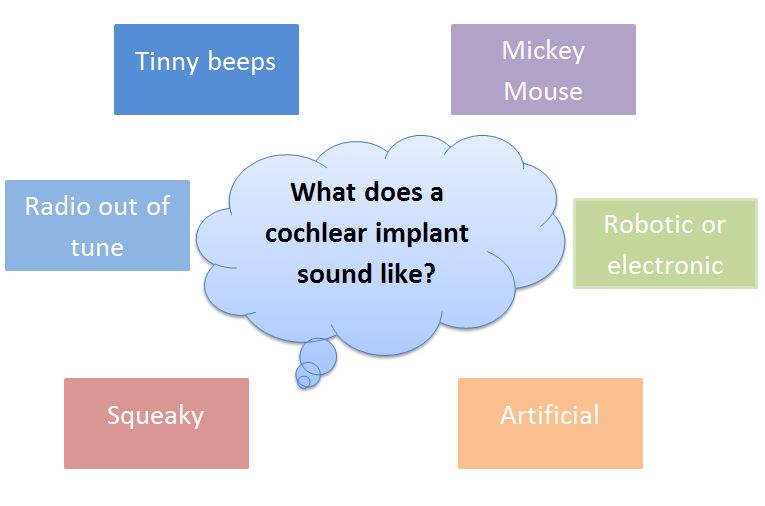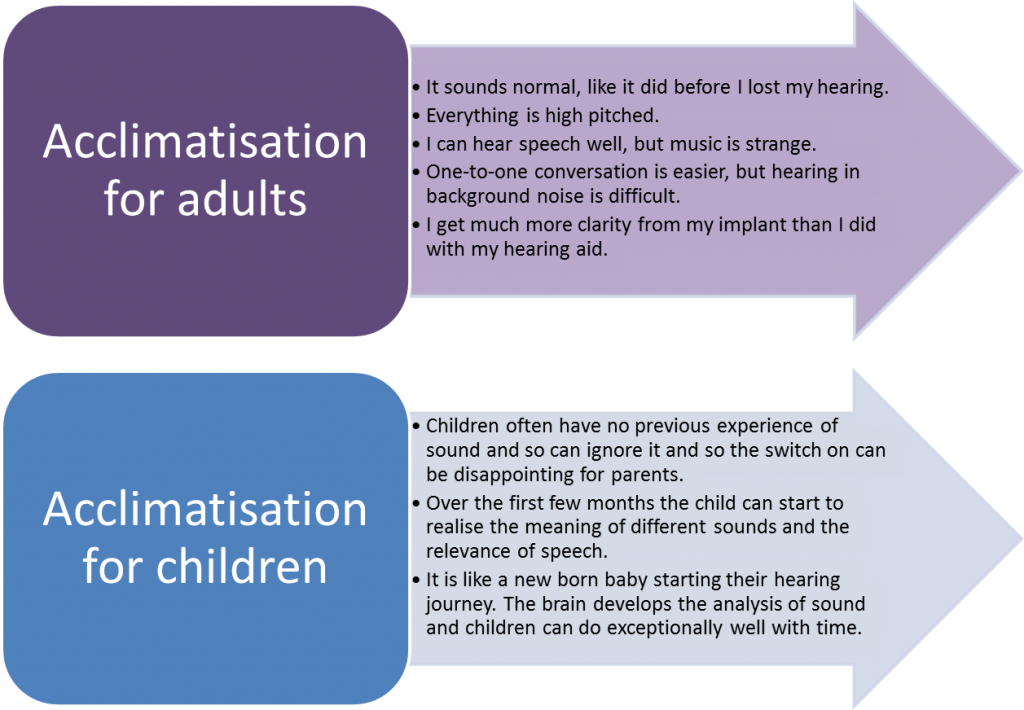Often patients and parents want to know what it sounds like to hear with a cochlear implant. This is likely to be very different for each individual patient. We can only really ask patients who have had normal hearing and then lost it to describe the sound they then hear when they have an implant. Adult patients will find the sound very strange at first but over time they acclimatise and the sound becomes more like ‘how speech sounded before’. Children who have their implant at a young age are likely to experience it very differently as they have no previous hearing experience to compare it to, it is ‘just how I hear’.

There are some reasons why the sound from an implant will sound strange at first:
- The implant is a totally different means of sound transmission. It uses electrical stimulation rather than the natural acoustic stimulation they previously heard with.
- The cochlear implant is very different from the intact hearing system. The information the implant can transmit is significantly reduced compared to normal hearing.
- Often the patient has had a long time without sound input, and their hearing aids have not been able to give them all sounds, particularly the higher frequencies. It can take some time to readjust to hearing these sounds again.
Click on the videos below to find out more about patient experiences at switch on.
Parent experiences
Adults experiences
Auditory acclimatisation
With consistent use and exposure to speech a patient can very quickly adapt to the sound of a cochlear implant.
Why does it take time to acclimatise to the sound?
The brain takes time to adjust to the electrical signal. It then takes time to make sense of the new input. The patient will need to attend 3 or 4 tuning sessions within the first month and then a further 3 or 4 sessions over the first year in order to get the sound of the cochlear implant optimised. Gradually, over time, the patient’s hearing levels and performance improve and the sound becomes more ‘normal’ and ‘natural’.
Images below of a first initial tuning (also referred to as “switch on”

How long does acclimatisation take?
There is a big variation between people. Initial acclimatisation can take only a few hours to a few weeks. Longer term acclimatisation also takes place. The outcome for the individual will depend on the cause of their hearing loss, their length of time deafened pre-implant and their hearing history. It will also depend on how much exposure to sound they have post implant. Practise is vital. The patients who immerse themselves in sound can do extremely well.

Remember the implant user is still Deaf however when the processors are switched off, and so it is important for them to develop a Deaf identity. There will still be certain situations like hearing in noise or from a distance that are more difficult. This is why the use of a radio aid system in the classroom is essential. This topic is covered later in the course.
Demonstrations
Researchers have made simulations of what a cochlear implant might sound like. Bear in mind these are only simulations, but can give you an idea of how much reduction there is in the information received, and how difficult it can be for some cochlear implant patients to hear.
The following website also give a variety of simulations of hearing with an implant and what music might sound like. Remember these are just simulations.
Key concepts
- What is a cochlear implant?
- How does it work?
- Who should have a cochlear implant?
- What does a cochlear implant sound like?
- Who manufactures cochlear implants?
